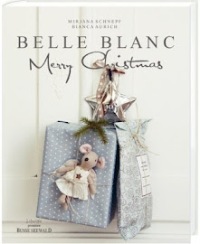Photo: William P. Steele
I’d love to share with you my absolute favorite feature in any periodical ever.
Photo: William P. Steele
The symphony of stunning décor and sweet storytelling is more than an ode of the joys of a summer vacation home—it transcends that and becomes the archetype of a summer vacation home. It beckons you to follow the lifestyle always.
And then, there’s the opposite element: circular forms. Feminine hats on the rack, a pair of platters on the wall, wildflowers including scabiosa and Queen Anne’s Lace tossed on a chair as if the picker just went to find an empty mayonnaise jar to put them in—all counterpoint the linear suite of the space’s backdrop.
An old house with a real butler’s party or larder. Pure utility and luxury in the same place.
Photo: William P. Steele
If you’ve never stayed in a vacation home for the summer (I haven’t), it matters not. You will feel as if you have after reading.
This essay brings a tear to my eye after I re-read it twenty years after the first time it arrived in my mailbox when I was a freshly minted college graduate. Written in the proper but warm tone of a Victorian lady penning a letter, it vibrantly depicts the ripe details of a fleeting thing as summer, and how they so permanently affix in one’s memory.
* * *
Porch Swings, Old Novels, and Memories of Summers Past
by Catherine Calvert
(Originally published in the “Leaves” section of Victoria magazine, July 1991)
Though many a house has sheltered me in the course of summers past, one memory serves to tie them all. It’s early afternoon, and all is sweet peace. Just a shift of the pillows sets the porch swing swaying gently—pillows covered in faded chintz with the slightly musty scent that attests to their long winter’s nap in the shed. The book lying tented across my chest is slightly musty too, foxed with the brown spots of age, since it was left downstairs in the bookcase 30 or 40 years ago. You may be sure there’s nothing in it to tax the brain: it’s a romance and Cressida and Percy are settling their futures over a game of tennis. But I shall simply revel in the pleasures of the present, listening to the burr of the lawn mower down the road, watching the hornets busy themselves with their nest, biting into the slice of lemon I’ve fished from my iced tea.
Ah, the joys of a summer place! Unlike year-round houses filled with serious furniture and serious concerns, this is a house that transcends utility, that summons up the joys of summertime when you cross the threshold. Shuffle off your shoes and pad across the cool floors, search out the porch (there has to be a porch with the traditional blue painted roof). Count the beds, with their white counterpanes and sagging springs—all is as it should be, as it was, and ever shall be.
The proper summer house exists out of time and has a sort of parallel life to our own workaday existence. I’ve been lucky living in some of the classics—breeze-swept houses by the sea in towns where generations of voyagers have spun out their summers under the maple trees. Whether turreted Victorians or restrained 18th-century houses with center halls, they had much in common. You’d pry the door open, as it stuck from winter’s dampness, and be met with that curious scent of past summers, compounded of damp bathing suits and Sunday morning bacon, dried wildflowers forgotten in vases, and sofa cushions that had seen too many wet towels. The floors were usually broad expanses of painted boards, so welcoming to sandy feet, with dust kittens rolling about under the furniture, testimony to haphazard housekeeping.
Everyone would claim a bedroom, searching out the one with the mattress that least resembled a hammock and longing for the sound of the sea singing in the ear at night. The kitchens and baths were mere utility—if that. Many of these houses were old, having belonged to families who’d farmed potatoes in the neighborhood for 200 years. If they were content with a toilet the rumbled and a stove that spit, surely these city folk could make do. And who planned much time inside anyway, when beach and meadow summoned?
Summer houses serve as the last repository for many families: Grandmother’s parlor suite sits next to a 1950s plywood table, and always wicker squeaks under its layers of paint, a protest, perhaps, against generations of spring spruce-ups. Any decorating scheme is as much a matter of memories as of material possessions.
Making our home our own was always easy. We could add what we liked—and subtract. Sometimes we’d spend the first few hours hiding the owners’ plastic lobsters, fake fishnets, and seagull mobiles in a deep dark closet to allow a clean sweep of our time there. There was always the delicious sense of being temporary, of freedom never knew at home. Drape a Marseilles spread over the sofa, swap the lamps around, drag the softest chair into the landing that overlooks the lake—all is permissible, all is comfortable. The point is to put one’s stamp on the house and settle in.
As June faded into July and then August, each house would become more and more ours. Our accumulations grew, the sum of summer days. Someone would gather a bucket of irresistible shells, as pink as the first light of morning, and scatter them along the mantelpiece. There were always tomatoes ripening on the windowsills and handfuls of berries found on country lanes. A seagull feather was dropped on the duck decoy, and wildflowers filled every jelly glass, shedding their petals on the table.
Books mounted on every surface. My favorites were the long-forgotten lode in every bookcase, the frothy reading of previous generations, school stories and adventure tales, courtly romances and memoirs of the Spanish American War—all to be gobbled, as they had originally, while we were ensconced in the porch swing.
We’d line the sideboard with jars of beach plum jelly from the Ladies Beautification Committee Fair and hang a watercolor of a rose discovered at a tag sale—and consider all of it quite beautiful indeed (if anyone had paused to look in between dashes to the tennis courts or bike rides to the beach).
The most important piece of furniture in the house was undoubtedly the dining room table, which was large, square, and surrounded by ten mismatched chairs that wobbled when discussions grew animated. Dinnertime was precious, and not a few morning hours were devoted to driving to the lobster pound and idling in the farmer’s market, hefting the green bundles of basil, or eyeing the corn with the concentration of a connoisseur. At twilight, an intrepid friend would crouch, under the cover of rising mists, and scratch through the neighboring field for forgotten potatoes. After that, the whole glorious pile of provender would be cleaned and steamed and served, with rivers of butter and some herbs, to the impatient table. Conversation dwindled as everyone ate, the only arguments rising over whether this was, in fact, the best corn all summer, or whether lobsters should be plunged into cold or boiling water. Then the evening would spin on, as the fireflies flashed through the screens, and everyone talked through the night and felt the glow of sun-warmed skin and good friendship.
Thinking back, I realize that the only time I ever really looked at any of our summer houses was on the last day, just before I turned the key in the lock to go home. My ostensible mission was to search for anything forgotten, but that final survey was always poignant. The house never seemed so tidy—already the tides of family life were receding. I’d walk from room to room, looking at and then lowering the windows and pulling the shades. In the kitchen, I’d reach for the bouquet of wildflowers, then leave it there, knowing it would surely wilt on the journey home. But I would seek out one last shell from the mantelpiece to carry with me, my fingers searching its cool, smooth contours, a shell as empty, and as beautiful, as that tall old house by the sea.
by Catherine Calvert
(Originally published in the “Leaves” section of Victoria magazine, July 1991)
* * *
* * *
Photo: William P. Steele
In the spirit this essay, I switched out my pink things and to “allow a clean sweep”
in honor of late summer.
Rachel Ashwell pillows from Mervyn’s I bought on Ebay nearly ten years ago for $20 each.
I sewed her ‘Brolly Blue’ ticking poplin on the reverse as I never cared for
the original sprigged print because there was too much red for me.
The swatches from my ‘idea folder’ during my blue and white stage.
From left to right: Ralph Lauren’s “Saratoga Toile” in blue, Rachel Ashwell’s
Simply Shabby Chic “Amanda” fabric from a shower curtain, Ralph Lauren’s
“Sarasota Stripe” wallpaper, and Rachel Ashwell’s “Brolly Blue” poplin ticking.
The only way to get these would be on Ebay as they’re no longer offered
with the exception of the “Saratoga Toile”.
Sometimes, a little powder blue makes pink prettier.
Book cover graphic: Tattered Vintage #308 $3.75
My dogs show up outside my screen door, meaning My King wants me down to share “the whole glorious pile of provender…steamed and served with rivers of butter and some herbs at the impatient table”, so I must blow out the candles and descend from my hillside accompanied by fireflies and cricket song to join him.
Though my style no longer is so ‘farmhousey’, I never tire of staring at the home featured in Victoria, for when I was working, dreaming, or renovating and felt discouraged by the long way I still had to march before I reached my goal of a home of my own, I’d take this magazine out and gaze at these pictures. And I’d feel at home. This is the magic of Victoria. Catherine Calvert is Victoria’s Writer-In-Residence again, so we may enjoy more of her prose once more.
What is your favorite Victoria article?
Until next time, stay shabby!
I'll be sharing this with:
for Victoria: Return to Loveliness




























































.jpg)




















































